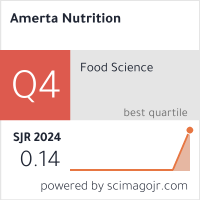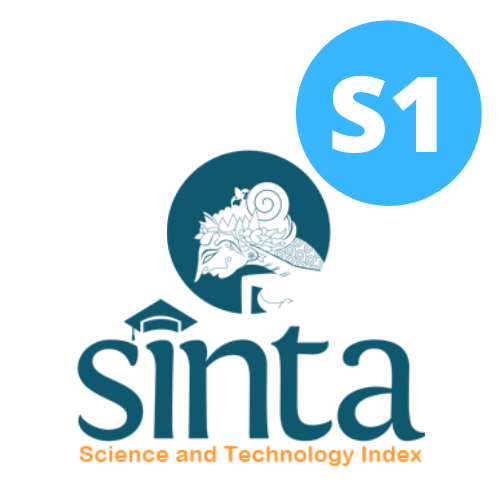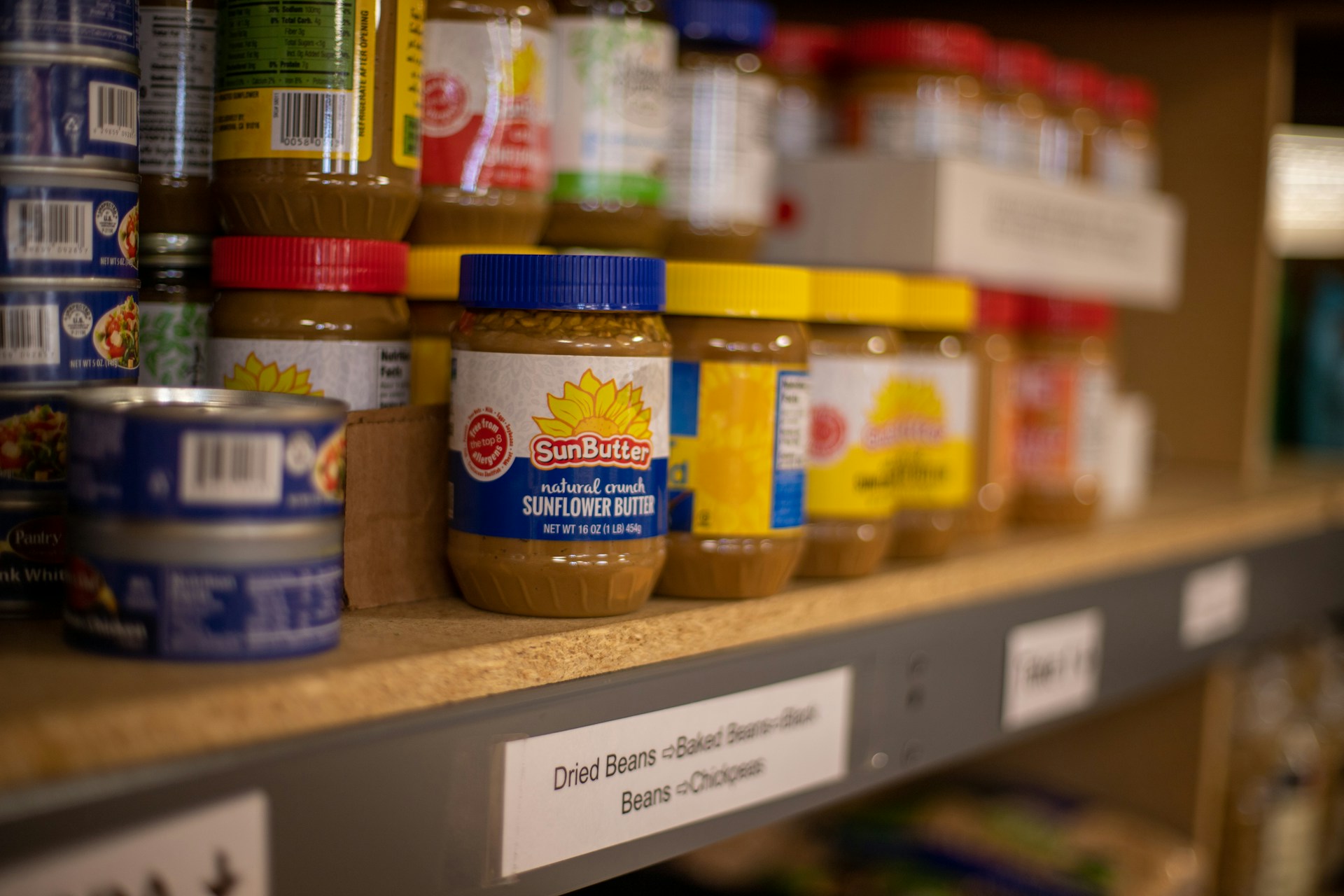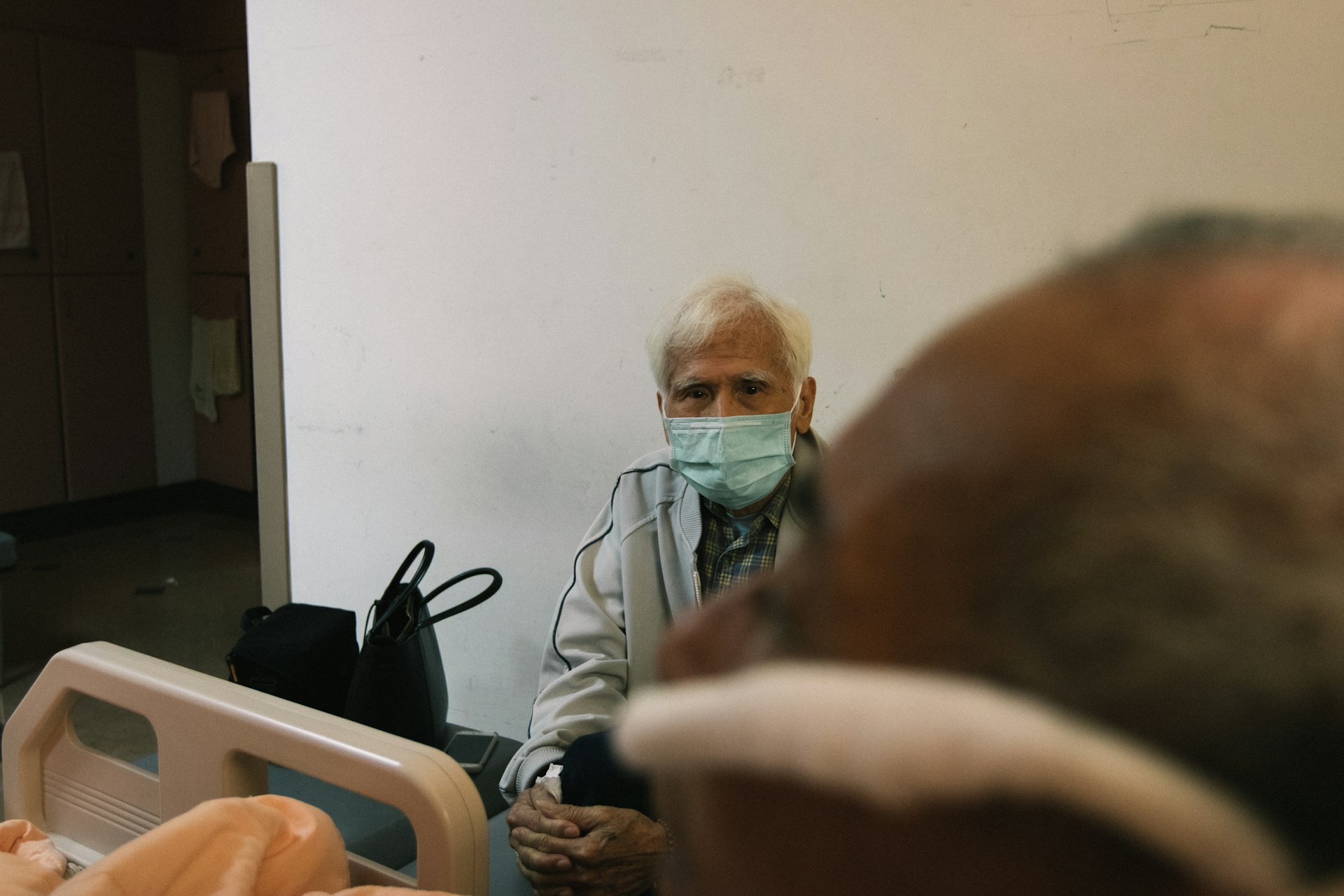Potential Raw Materials for Emergency Food Products in Southeast Asia
Potensi Bahan Baku Produk Pangan Darurat di Asia Tenggara

Background: The occurrence of natural disaster in Southeast Asia due to its location along the Asia Pacific Ring of Fire is high. The consequences of the natural disasters on various aspects, like that social, financial, and food security can be large. This initiative promotes the development of emergency food products to address the daily nutritional requirements of natural disaster victims, ensuring their survival. The specified standard is 2,100 kcal/day, emphasizing a balanced distribution of macronutrients (40-50% carbohydrates, 35-45% fat, and 10-15% protein).
Objectives: This literature review explored the potential raw materials for emergency food products in the Southeast Asia.
Methods: This review utilized databases from Google Scholar and PubMed websites, employing specific keywords for each identified category to gather the latest literature. The literature obtained was 10 article.
Discussions: This review explores solutions to the challenges posed by natural disasters in Southeast Asia, focusing on the potential use of locally available resources as raw materials for emergency food products. Raw materials, including Fish Hydrolyzate Protein (FPH), offer numerous benefits due to their bioactive contents, such as antioxidant, antihyperglycemic, antimicrobial, antitumor, ACE inhibitor activity, calcium binding, and anticoagulant properties, particularly beneficial for vulnerable groups. The review also delves into the elimination of raw materials, the nutritional content of various types of emergency food products, and innovative solutions for emergency food products in Southeast Asia.
Conclusions: The potential raw materials identified have the capability to yield innovative emergency food products with both excellent physicochemical quality and health potential.
Ali, R., Kuriqi, A. & Kisi, O. Human-Environment Natural Disasters Interconnection in China: A Review. Climate 8 (2020). https://doi.org:doi:10.3390/cli8040048
Triantafyllou, l., Katsiyannis, A. & Papadopoulos, G. Historical Earthquakes, Tsunamis, Volcanic Eruptions and Comets in The Eastern Mediterranean and The Sinai Sub‑Plate: Evidence From Two Little‑Known Greek Documents. Natural Hazards 116, 1711-1733 (2023).
Reddy, V., Devi, M. J. & Anbumozhi, V. Ensuring Food and Nutritional Security in the Face of Disasters and Climate Change: What is the Adaptive Solution?. 290-330 (2019).
Chai, D., Wang, M. & Liu, K. Driving Factors of Natural Disasters in Belt and Road Countries. International Journal of Disaster Risk Reduction 51 (2020).
Ginantra, N. et al. Architectural Models for Predicting the Amount of Natural Disasters and Their Effects using Batch Training. Journal of Physics: Conference Series (2020). https://doi.org:doi:10.1088/1742-6596/1566/1/012032
Yulianto, E., Yusanta, D. A., Utari, P. & Satyawan, Ignatius Agung Community Adaptation and Action During the Emergency Response Phase: Case Study of Natural Disasters in Palu, Indonesia. International Journal of Disaster Risk Reduction 65 (2021).
Kusumastuti, R. D., Arviansyah, A., Nurmala, N. & Wibowo, S. S. Knowledge Management and Natural Disaster Preparedness: A Systematic Literature Review and A Case Study of East Lombok, Indonesia. International Journal of Disaster Risk Reduction 58 (2021).
Alam, M. K., Rana, Z. H., Islam, S. N. & Akhtaruzzaman, M. Comparative Assessment of Nutritional Composition, Polyphenol Profile, Antidiabetic and Antioxidative Properties of Selected Edible Wild Plant Species of Bangladesh. Food Chemistry 320 (2020). https://doi.org:https://doi.org/10.1016/j.foodchem.2020.126646
Tien, P. V. et al. Rainfall-Induced Catastrophic Landslide In Quang Tri Province: The Deadliest Single Landslide Event In Vietnam in 2020. Landslide News 18, 2323-2327 (2021). https://doi.org:10.1007/s10346-021-01664-y
Hamidin, R. & Juharnib. The Physicochemical Characteristics of Smart Food Bars Enriched with Moringa Leaf Extract And Chitosan as An Emergency Food in Disaster Times. International Journal of Food, Agriculture, and Natural Resource 2, 24-28 (2021).
Sullivan, W. G., Wicks, E. M. & Koelling, C. P. Engineering Economy. 17 edn, 635-43 (Pearson Education, 2019).
Hadi, V. et al. Properties of Compact Food Bars: A Review Study. Journal of Nutrition Fasting and Health 6, 125-131 (2018). https://doi.org:10.22038/JNFH.2018. 34018.1130
Gong, S., Ye, Y., Gao, X., Chen, L. & Wang, T. Empirical Patterns of Interdependencies Among Critical Infrastructures In Cascading Disasters: Evidence From A Comprehensive Multi-Case Analysis. International Journal of Disaster Risk Reduction 95 (2023). https://doi.org:https://doi.org/10.1016/j.ijdrr.2023.103862
Jafri, A. et al. Food Availability, Accessibility and Dietary Practices During the COVID-19 Pandemic: A Multi-Country Survey. Public Health Nutrition 24, 1798-1805 (2021). https://doi.org:10.1017/S1368980021000987
Marshall, J., Wiltshire, J., Delva, J., Bello, T. & Masys, A. J. Natural and Manmade Disasters: Vulnerable Populations. Global Health Security, 143-161 (2020).
Fatmah, Utomo, S. W. & Fatma, L. Broccoli-Soybean-Mangrove Food Bar as an Emergency Food for Older People during Natural Disaster. International Journal of Environmental Research and Public Health 18 (2021). https://doi.org:https://doi.org/10.3390/ijerph18073686
Tilly, J. Opportunities to Improve Nutrition for Older Adults and Reduce Risk of Poor Health Outcomes. Administration for Community Living or the U.S. Department of Health and Human Services (2017).
Nieuwenhuizen, W. F., Weenen, H., Rigby, P. & Hetherington, M. M. Older Adults and Patients in Need of Nutritional Support: Review of Current Treatment Options and Factors Influencing Nutritional Intake. Clinical Nutrition 29, 160-169 (2010). https://doi.org:10.1016/j.clnu.2009.09.003
Zhu, H. & An, R. Impact of Home-Delivered Meal Programs on Diet and Nutrition Among Older Adults: A review. Sage Journal 22 (2014).
Saggu, K. A., Tomer, V., Ashwani, K. & Pandey, P. Consideration of Phytonutrients, Probiotics and Prebiotics For Enhanced Immunity During Disaster Relief Situation - A review. Clinical Nutrition Open Science 47, 131-146 (2023). https://doi.org:https://doi.org/10.1016/j.nutos.2022.12.011
Jang, S., Ekyalongo, Y. & Kim, H. Systematic Review of Displacement and Health Impact From Natural Disasters in Southeast Asia. Disaster Medicine and Public Health Preparedness 15, 105-114 (2020). https://doi.org:https://doi.org/10.1017/dmp.2019.125
Benevolenza, M. & Derigne, L. The Impact of Climate Change and Natural Disasters on Vulnerable Populations: A Systematic Review of Literature. Journal of Human Behavior in the Social Environment 29 (2019). https://doi.org:https://doi.org/10.1080/10911359.2018.1527739
Baugreet, S., Hamill, R. M., Kerry, J. P. & McCarthy, S. e. N. Mitigating Nutrition and Health Deficienciesin Older Adults: A Role for Food Innovation? Journal of Food Science 82 (2017). https://doi.org:doi: 10.1111/1750-3841.13674
Weyh, C., Kruger, K. & Strasser, B. Physical Activity and Diet Shape the Immune System during Aging. Nutrients 12, 622 (2020). https://doi.org:https://doi.org/10.3390/nu12030622
Khetarpaul, N. Covid-19, Nutrition, Immunity, and Diet. BMJ Nutrition Prevention & Health 3 (2022). https://doi.org:10.1136/bmjnph-2020-000085
World Food Programe. (Italy, 2002).
Fang, D., Thomson, M. R. & Nayga, R. M. The Association Between Food Insecurity and Mental Health During the COVID-19 pandemic. BMC Public Health 21 (2021). https://doi.org:https://doi.org/10.1186/s12889-021-10631-0
MC, M., MSW, T., Miller, D. P. & Morrissey, T. W. Food Insecurity and Child Health. Pediatrics 144 (2019). https://doi.org:https://doi.org/10.1542/peds.2019-0397
Jensen, A. C., Rabbit, M. P., Gregory, C. A. & Sigh, A. Statistical Supplement to Household Food Security in the United States in 2020. Administrative Publication 34 (2021).
Calder, P. C. Nutrition, Immunity and Covid-19. BMJ Nutrition Prevention & Health 3, 74-92 (2020). https://doi.org:10.1136/bmjnph-2020-000085
Maxwell, D. et al. Emergency Food Security Interventions. Good Practice Review (2008).
Hasan, Putri & Zainal. Preparation of Cookies from Banana Flour, Soy Flour, and Moringa Leaf Flour As An Emergency Food Product IOP Conf. Series: Earth And Environmental Science4 486 (2020). https://doi.org:doi:10.1088/1755-1315/486/1/012059
Berdanier, C. D. & Berdanier, L. A. Advanced Nutrition. 614 (2021).
Zhou, Y. et al. Mastering The Art of Taming: Reducing Bitterness in Fish By-Products Derived Peptides. Food Research International 173 (2023). https://doi.org:https://doi.org/10.1016/j.foodres.2023.113241
Sheibani, E., Moghaddam, A. D., Sharifan, A. & Afshari, Z. Linear programming: An Alternative Approach for Developing Formulations for Emergency Food Products. Journal of the Science and Agriculture (2017). https://doi.org: https://doi.org/10.1002/jsfa.8612
Ministry of Health of The Republic of Indonesia. National Guidelines for The Health Crisis Management. (2023).
Ratnasari, D. Effect of Adding Cornstarch on the Quality of Snakehead Fish Nuggets (Channa Striata). Jurnal Ilmiah Gizi Kesehatan 2 (2021).
McGrievy, G. T., Karami, A., Manroe, C. & Brands, H. M. Dietary Pattern Recognition on Twitter: A Case Example of Before, During, and After Four Natural Disasters. Natural Hazards 103, 1035-1049 (2020). https://doi.org:https://doi.org/10.1007/s11069-020-04024-6
Huang, D., Chen, Y., Chen, P. & Zheng, Q. The Protein Losses of Three Major Cereal Crops by Natural Disasters in China From 1988 to 2020. Frontiers in Environmental Science 10 (2022). https://doi.org:10.3389/fenvs.2022.884754
Kementrian Kesehatan Republik Indonesia. 7-16 (Kementrian Kesehatan Republik Indonesia, Jakarta, 2012).
House, J. D., Neufeld, J. & Leson, G. Evaluating the Quality of Protein from Hemp Seed (Cannabis sativa L.) Products Through the use of the Protein Digestibility-Corrected Amino Acid Score Method. Journal Agricultural and Food Chemical 58, 11801-11807 (2010). https://doi.org:https://doi.org/10.1021/jf102636b
Johnson et al. Fructose Metabolism As A Common Evolutionary Pathway of Survival Associated with Climate Change, Food Shortage and Droughts. Journal of Internal Medicine 287, 252-262 (2020). https://doi.org:doi: 10.1111/joim.12993
Li, M., Daygon, V. D., Solah, V. & Dhital, S. Starch Granule Size: Does it matter? Critical Reviews in Food Science and Nutrition 63, 3683-3703 (2021). https://doi.org:https://doi.org/10.1080/10408398.2021.1992607
United States Departement of Agriculture. Moisture Handbook. (FGIS, 2022).
SNI. SNI 01- 4216-1996 Regarding Food Quality Requirements for Weight Control Diets. (1996).
Fadhlan, Nurminah & Karo. Physicochemical Characteristics of Food Bar From Composite Flour (Modified Breadfruit, Purple Sweet Potato, Mocaf, and Saga Seeds) International Conference on Agriculture, Environment and Food Security 782 (2020). https://doi.org:doi:10.1088/1755-1315/782/3/032081
Andreani, G. et al. Plant-Based Meat Alternatives: Technological, Nutritional, Environmental, Market, and Social Challenges and Opportunities. Nutrients 15 (2023). https://doi.org: https://doi.org/10.3390/nu15020452
Samuel, K. S. & Peerkhan, N. Pearl Millet Protein Bar: Nutritional, Organoleptic, Textural Characterization, and In-Vitro Protein and Starch Digestibility. Journal of Food Science and Technology 57, 3467-3437 (2020). https://doi.org: https://doi.org/10.1007/s13197-020-04381-x
Sigh, M. et al. Plant-Based Meat Analogue (PBMA) As A Sustainable Food: A Concise Review. European Food Research and Technology 247, 2499-2526 (2021). https://doi.org:https://doi.org/10.1007/s00217-021-03810-1
Aljaloud, S., Colleran, H. L. & Ibrahim, S. A. Nutritional Value of Date Fruits and Potential Use in Nutritional Bars for Athletes. Food and Nutrition Sciences 11 (2020). https://doi.org:http://creativecommons.org/licenses/by/4.0/
ECK, K. & Byrd, B. Food Choice Decisions of Athletes Insights From Sports Dietitians. Clinical Nutrition 34 (2019). https://doi.org:10.1097/TIN.0000000000000178
James, G. Food and Nutrition. (2023).
Mahendradatta, M., Laga & NIU, N. Study of Snack Bar Combination of Banana Flour (Musa Paradisiaca) and Mung Bean Flour Blending as Emergency Food. IOP Conf. Series: Earth and Environmental Science 486 (2020). https://doi.org:10.1088/1755-1315/486/1/012054
Friedl, K. E., Askew, W. & Schnakenberg, D. D. Chapter 7 - A ration is Not Food Until It Is Eaten: Nutrition Lessons Learned from Feeding Soldiers. Present Knowledge in Nutrition (Eleventh Edition) 2, 121-142 (2020). https://doi.org:https://doi.org/10.1016/B978-0-12-818460-8.00007-1
Bach, D., Bedin, A. C., Lacerda, L. G., Nogueira, A. & Demiate, I. M. Sweet Potato (Ipomoea batatas L.): a Versatile Raw Material for the Food Industry. Brazilian Archives of Biology and Technology 64 (2021). https://doi.org:https://doi.org/10.1590/1678-4324-2021200568
Prabha, Nithin, A., Mariarose, L. & Vincent, S. Processing of Nutritive Fish Protein Hydrolysate from Leiognathus splendens. International Journal of Peptide Research and Therapeutics 26, 861-871 (2020). https://doi.org:https://doi.org/10.1007/s10989-019-09892-6
Zhang, N. et al. Nutritional Evaluation of Fish Protein Hydrolysate and Its Application in Piglet Production. Journal of Animal Science 100 (2022). https://doi.org:https://doi.org/10.1093/jas/skab369
Pandin, M. G. R., Waloejo, C. S., Sunyowati, D. & Rizkyah, I. The Potential of Mocaf (Modified Cassava Flour) as Disaster Emergency Food. IOP Conf. Series: Earth and Environmental Science (2022). https://doi.org:doi:10.1088/1755-1315/995/1/012006
Jasso, G. et al. Prebiotic Effects of A Mixture of Agavins and Green Banana Flour in A Mouse Model of Obesity. Journal of Functional Foods 64 (2020). https://doi.org:https://doi.org/10.1016/j.jff.2019.103685
Fahim, M. et al. TLC-Bioautography Identification and GC-MS Analysis of Antimicrobial and Antioxidant Active Compounds in Musa × paradisiaca L. fruit pulp essential oil. Journals Phytochemical Analysis (2019). https://doi.org:https://doi.org/10.1002/pca.2816
Kaur, L., Dhull, S. B., Kumar, P. & Sigh, A. Banana starch: Properties, Description, and Modified Variations - A review. International Journal of Biological Macromolecules 165, 2096-2102 (2020). https://doi.org:https://doi.org/10.1016/j.ijbiomac.2020.10.058
Oktofyani, C. F. & Taufik, M. Formulation of Foodbars Made from Banana Kepok Peel Flour and Soy Flour. Jurnal Bioindustri 2, 2654-5403 (2020).
Li, S. et al. Effect of Solid-State Fermentation with Lactobacillus Casei on The Nutritional Value, Isoflavones, Phenolic Acids and Antioxidant Activity of Whole Soybean Flour. LWT_Food Science and Technology 125, 109264 (2020).
Soni, A., Samuelsson, L. M., Loveday, S. M. & Gupta, T. B. Applications of Novel Processing Technologies to Enhance The Safety and Bioactivity of Milk. Comprehensive Reviews in Food Science and Food Safety 20 (2021). https://doi.org: https://doi.org/10.1111/1541-4337.12819
Visentin et al. Processing Characteristics of Dairy Cow Milk are Moderately Heritable. Journal of Dairy Science 100, 6343-6355 (2017). https://doi.org:https://doi.org/10.3168/jds.2017-12642
Sheika, A. F. E. & Ray, R. C. Potential Impacts of Bioprocessing of Sweet Potato: Review. Critical Reviews in Food Science and Nutrition 57 (2016). https://doi.org:https://doi.org/10.1080/10408398.2014.960909
Pareira, A. P. A. et al. Orange Fleshed Sweet Potato Flour As A Precursor of Aroma and Color of Sourdough Panettones. LWT_Food Science and Technology 101, 145-151 (2019). https://doi.org:https://doi.org/10.1016/j.lwt.2018.10.091
Kediri, O., Gbadamosi, S. O. & Akanbi, C. T. Extraction Kinetics, Modelling and Optimization of Phenolic Antioxidants from Sweet Potato Peel Vis-A-RSM, ANN-GA and Application in Functional Noodles. journal of Food Measurement and Characterization 13, 3267-3284 (2019). https://doi.org:https://doi.org/10.1007/s11694-019-00249-7
Dan, L., Mu, T. H., Sun, H. & Chen, J. Optimazation of The Formula and Processing of A Sweet Potato Leaf Powder-Based Beverage. Food Science and Nutrition 8, 2680-2691 (2019). https://doi.org:10.1002/fsn3.1555
Korese, J. K., Chikpah, S. K., Hensel, O., Pawelzik, E. & Sturm, B. Effect of Orange-Fleshed Sweet Potato Flour Particle Size And Degree of Wheat Flour Substitution on Physical, Nutritional, Textural and Sensory Properties of Cookies. European Food Research and Technology 247, 889-905 (2021). https://doi.org:https://doi.org/10.1007/s00217-020-03672-z
Azeem, M., Mu, T. H. & Zhang, M. Influence of Particle Size Distribution of Orange-Fleshed Sweet Potato Flour on Dough Rheology and Simulated Gastrointestinal Digestion of Sweet Potato-Wheat Bread. LWT_Food Science and Technology 131 (2020). https://doi.org:https://doi.org/10.1016/j.lwt.2020.109690
Islam, S., Satter, Islam, M. F., Tisha, K. Z. & Mondol, M. M. H. Physicochemical, Functional and Health Promoting Properties of Resistant Starch from Green Banana (Musa Paradisiaca). SSRN (2023). https://doi.org:http://dx.doi.org/10.2139/ssrn.4571412
United States Department of Agriculture. Values adapted from the USDA FoodData Central (2021).
Robbani, R. B. et al. Nutritional, Phytochemical, and In Vitro Antioxidant Activity Analysis of Different States of Soy Products. International Journal od Food Science (2022). https://doi.org:https://doi.org/10.1155/2022/9817999
Mann, J., Truswell, S. & Hodson, L. Essentials of Human Nutrition. (Oxford University Press, 2023).
Pino, F. R., Carpio, J. E. & Guadix, E. M. Evaluation of The Bioactive Potential of Foods Fortified With Fish Protein Hydrolysates. Food Research International 137 (2020). https://doi.org:https://doi.org/10.1016/j.foodres.2020.109572
Pino, F. R., Carpio, J. E. & Guadix, E. M. Bioactive Fish Hydrolysates Resistance To Food Processing. LWT_Food Science and Technology 117 (2020). https://doi.org:https://doi.org/10.1016/j.lwt.2019.108670
Gao, R. et al. Production, Bioactive Properties, And Potential Applications of Fish Protein Hydrolysates: Developments and Challenges. Trends in Food Science & Technology 110 (2021). https://doi.org:https://doi.org/10.1016/j.tifs.2021.02.031
Idowu, A. et al. Bioactivity Potentials and General Applications of Fish Protein Hydrolysates. International Journal of Peptide Research and Therapeutics 27, 109-118 (2021). https://doi.org:https://doi.org/10.1007/s10989-020-10071-1
You, L., Zhao, M., Regenstein, J. M. & Ren, J. Purification and Identification of Antioxidative Peptides From Loach (Misgurnus Anguillicaudatus) Protein Hydrolysate Byconsecutive Chromatography And Electrospray Ionization-Mass Spectrometry. Food Research International 43, 1167-1173 (2010). https://doi.org:10.1016/j.foodres.2010.02.009
Song, R., Wei, R., Zhang, B. & Wang, D. Optimization of the Antibacterial Activity of Half-Fin Anchovy (Setipinna taty) Hydrolidates. Food and Bioprocess Technology 5, 1979-1989 (2011). https://doi.org:https://doi.org/10.1007/s11947-010-0505-3
Sharkey, S. J. et al. A Narrative Review of the Anti-Hyperglycemic and Satiating Effects of Fish Protein Hydrolysates and Their BioactivePeptides. Molecular Nutrition & Food Research 64 (2020). https://doi.org:10.1002/mnfr.202000403
Nirmal, N. P., Santivarangkna, C., Rajput, M. S., Benjakul, S. & Magsood, S. Valorization of Fish Byproducts: Sources to End-Product Applications of Bioactive Protein Hydrolysate. Comprehensive Reviews in Food Science and Food Safety 21, 1803-1842 (2022). https://doi.org: https://doi.org/10.1111/1541-4337.12917
Saisavoey, T., Santanoo, P., Reamtong, O. & Karnchanatat, A. Free Radical Scavenging and Anti-Inflammatory Potential of A Protein Hydrolysate Derived from Salmon Bones on RAW 264.7 macrophage cells. Journal of Science of Food and Agriculture (2019). https://doi.org: https://doi.org/10.1002/jsfa.9755
Ding, C. et al. Identification of Peptides with Antioxidant, Anti-Lipoxygenase, Anti-Xanthine Oxidase and Anti-Tyrosinase Activities from Velvet Antler Blood LWT_Food Science and Technology 168 (2022). https://doi.org:https://doi.org/10.1016/j.lwt.2022.113889
Nakajima, K., Stark, Y. Y. & Ogushi, M. Comparison of ACE Inhibitory and DPPH Radical Scavenging Activities of Fish Muscle Hydrolysates. Food Chemistry 114, 844-851 (2009). https://doi.org:10.1016/j.foodchem.2008.10.083
Manzoor, M., Sigh, J. & Gani, A. Exploration of Bioactive Peptides from Various Origin as Promising Nutraceutical Treasures: In Vitro, in Silico And In Vivo Studies. Food Chemistry 373 (2022). https://doi.org:https://doi.org/10.1016/j.foodchem.2021.131395
Jung, W. K. & Kim, S. K. Calcium-Binding Peptide Derived from Pepsinolytic Hydrolysates of Hoki (Johnius Belengerii) Frame. European Food Research and Technology 224, 763-767 (2007).
Kheeree, N. et al. Discovery of Calcium-Binding Peptides Derived from Defatted Lemon Basil Seeds with Enhanced Calcium Uptake in Human Intestinal Epithelial Cells, Caco-2. scientific reports 12, 4659 (2022).
Mizushige, T. et al. Fish Protein Hydrolysate Exhibits Anti-Obesity Activity and Reduces Hypothalamic Neuropeptide Y and Agouti-Related Protein Mrna Expressions in Rats. Biomedical Research 36, 351-357 (2017).
Bernaldez, M. A. et al. Breast Milk MicroRNAs Related to Leptin and Adiponectin Function can be Modulated by Maternal Diet and Influence Offspring Phenotype in Rats. International Journal of Molecular Sciencw 23, 7237 (2022). https://doi.org: https://doi.org/10.3390/ijms23137237
Khan, S. et al. Fish Protein and Its Derivatives: The Novel Applications, Bioactivities, and Their Functional Significance in Food Products. Food Review International 38 (2020). https://doi.org:https://doi.org/10.1080/87559129.2020.1828452
Afifah, D. N. et al. Nutrient Content, Organoleptic Quality, and Shelf Life of Sagon Substitute from Lindur (Bruguiera gymnorrhiza L.) and Soybean Flour (Glycine max L.), as an Alternative Emergency Food Frontiers in Nutrition 9 (2022).
Sunyoto, M., Andoyo, R. & Masitoh, E. Characteristics of High Protein Snack Bar Made of Modified Sweet Potato Flour. International Conference on Sustainable Agriculture, Food and Energ (2019).
Murdiani, Kalsum, N. & Sarono. Formulation of Onggok Composite Flour Snack Bar (Manihot Esculenta) as Emergency Food Source of Protein. Journal of Community Development in Asia (JCDA) 5, 90-101 (2022).
Putri, R. A. N., Rahmi, A. & Nugroho, A. Cereal Flakes From Ipomoea Batatas and Setaria Italicaas Emergency Food: Chemical, Microbiological, And Sensory Properties During Storage. Jurnal Pangan dan Agroindustri 9, 227-233 (2021).
Sumarto, Radiati, A., Deris, A., Irma, N. & Irma, K. Development of Emergency Food Products from Various Flour of Cereals, Tubers, Pulses, and Local Freshwater Fish From Indonesia. Journal of Eengineering, Social and Health 2 (2023). https://doi.org:https://ajesh.ph/index.php/gp
Hasbullah, Rasulu, H., Albaar, N. & Mansour, N. A. A. The Use of Fishing Tuna Flour Fortification Modified Tapioca Starch in Emergency Food Product. Advances in Engineering Research 194 (2019).
Clancy, C., Watson, T. & Raw, Z. Resilience and The Role of Equids in Humanitarian Crises. Disasters 46, 1075-1097 (2021). https://doi.org: https://doi.org/10.1111/disa.12501
Agostoni, C., Baglioni, M., Vecchia, A. L., Molari, G. & Berti, C. Interlinkages between Climate Change and Food Systems: The Impact on Child Malnutrition—Narrative Review. Nutrients 15, 416 https://doi.org:https://doi.org/10.3390/nu15020416
Ayseli, M. T. New Frontiers in Flavor, Color, and Sweeteners During the Post-COVID-19 Period: A Systematic Review. Trends in Food Science & Technology 140, 104144 (2023). https://doi.org:https://doi.org/10.1016/j.tifs.2023.104144
Machado, T. A. D., Pacheco, M. T. B., Queiroga, R. d. C. R., Cavalcante, L. M. & al, e. Nutritional, Physicochemical and Sensorial Acceptance Of Functional Cookies Enriched with Xiquexique (Pilosocereus Gounellei) Flour. Plos One 16 (2021). https://doi.org:https://doi.org/10.1371/journal.pone.0255287
Saferidi, P. et al. The Neglected Environmental Impacts of Ultra-Processed Foods. The Lancet Planetary Health 4 (2020). https://doi.org:https://doi.org/10.1016/S2542-5196(20)30177-7
Colombo, S. M. et al. Towards Achieving Circularity and Sustainability in Feeds for Farmed Blue Foods. Reviews in Aquaculture (2022). https://doi.org: https://doi.org/10.1111/raq.12766
Copyright (c) 2025 Amerta Nutrition

This work is licensed under a Creative Commons Attribution-ShareAlike 4.0 International License.
AMERTA NUTR by Unair is licensed under a Creative Commons Attribution-ShareAlike 4.0 International License.
1. The journal allows the author to hold the copyright of the article without restrictions.
2. The journal allows the author(s) to retain publishing rights without restrictions
3. The legal formal aspect of journal publication accessibility refers to Creative Commons Attribution Share-Alike (CC BY-SA).
4. The Creative Commons Attribution Share-Alike (CC BY-SA) license allows re-distribution and re-use of a licensed work on the conditions that the creator is appropriately credited and that any derivative work is made available under "the same, similar or a compatible license”. Other than the conditions mentioned above, the editorial board is not responsible for copyright violation.












































